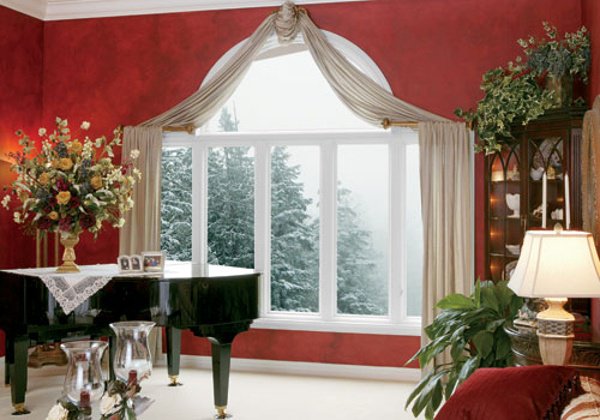


Condensation is a fancy term for liquid water that has formed on a surface as moist air comes into contact with that surface. The water on your mirror after a shower is condensation, as is the fog that builds up on your glasses when you step into a steamy room. Windows, too, can accumulate condensation. Sometimes, that condensation is a problem, and other times it is not. Keep reading to learn when you need to worry about window condensation in your Michigan home.
Where is the condensation located?
Window condensation can appear in three locations: on the inside of your windows, on the outside of your windows, or between the multiple glass panes that form the windows. Condensation on the outside is not a concern — it says more about the humidity levels outside than about the windows itself and is a common occurrence in the summer when the air is really moist. Condensation on the inside of the windows says something about the humidity levels inside your home. Specifically, your indoor air may be too humid, which can lead to issues like mold and mildew growth inside the home. These are pretty mild concerns since if you lower the humidity, perhaps by installing a dehumidifier, the condensation will stop appearing.
The final type of condensation is the one you need to be concerned about: condensation between the glass. If you have dual-pane glass windows, you may see condensation between the two panes of glass. If you have triple-pane windows, condensation may appear in one air gap, or in both. In either case, air is not supposed to be able to pass between the gas panes. The appearance of condensation in the air spaces indicates that the windows are leaking, which can have some important implications on their function and longevity.
What problems does between-glass condensation cause or indicate?
When you see condensation on your windows, try wiping the inside and outside of the window. If neither action absorbs the condensation, then the condensation is between the panes, which could indicate or cause the following issues.
Loss of Energy-Efficiency
The appearance of condensation means that air is leaking around the glass panes. Leaky windows are no longer as efficient as they once were, which means your energy bills might start to rise.
Draftiness
Especially during the cold winter months, you might feel the air leaking in through your damaged windows. These drafts may make certain rooms in your Michigan home feel cold and uncomfortable, prompting you to turn the thermostat higher and bundle up in more layers.
Mold and Deterioration
Wherever there is moisture, there will soon by mold. The condensation between the glass panes may prompt mold to start growing in this area. The mold can make your window look cloudy and dirty, and if its spores blow into your home, you may experience allergy symptoms.
Loss of Glass Stability
As the condensation causes the window frame materials to deteriorate and rot, the glass may become less stable in the window frame. The glass may fall out and shatter if a high wind blows in or if someone bumps into it.
Have you noticed condensation between the glass panes in your windows? The best solution is to have these windows replaced with energy-efficient options. Contact Renewal by Andersen of Greater Michigan to schedule a free consultation in your home.